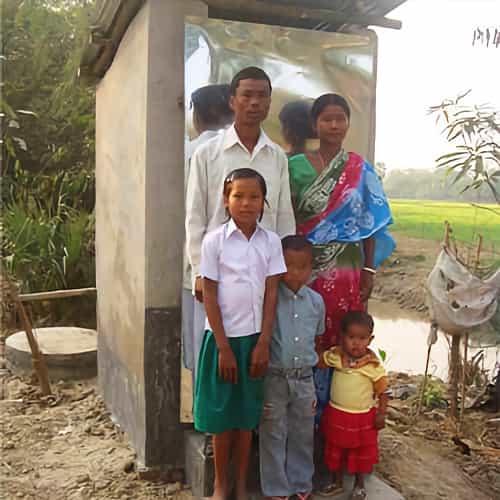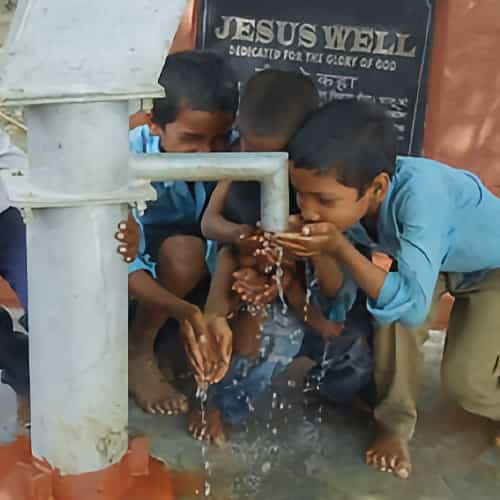Solutions to Extreme Poverty
Solutions to extreme poverty start with meeting the basic needs of those living on less than $1.90 a day.
Clean water and proper sanitation are fundamental to health and, therefore, to solutions to poverty.
Sanitation
About 4.2 billion people worldwide lack sanitation services, which could prevent the spread of debilitating and deadly diseases (from dysentery to polio and hepatitis A).[1] Proper sanitation also means that women and girls do not have to risk their safety by relieving themselves in fields, in the streets, or behind bushes.
GFA has built more than 32,000 outdoor toilet facilities in many countries in Asia. The privacy and safety these facilities provide have saved countless lives. Between 2000 and 2016, improved sanitation contributed to a 15% decrease just in diarrheal deaths alone in Southeast Asia, East Asia and Oceania.[2]
Water
Likewise, clean drinking water can prevent a large percentage of the 2.2 billion people who don’t have safely managed water[3] from contracting deadly illnesses like typhoid, giardia and cholera and others which cause life-threatening diarrhea.
About 2.4 million people per year could be saved from diarrheal deaths by providing clean water, sanitation and basic hygiene education.[4]
GFA digs Jesus Wells down to 200 meters or more to make sure villagers can access water year-round, even during droughts. Local churches maintain the wells, ensuring they work constantly.
Clean water and sanitation mean more girls attending school
Clean water and private sanitation facilities also encourage girls to attend school. Girls are more likely to miss school than boys because 1) they are the ones who travel to collect water in 80% of households without nearby water services, and 2) girls often miss school during menstruation due to a lack of private bathrooms.[5]
Click here, to read more about this article.
Click here, to read more blogs in Gospel for Asia.Net


Comments
Post a Comment